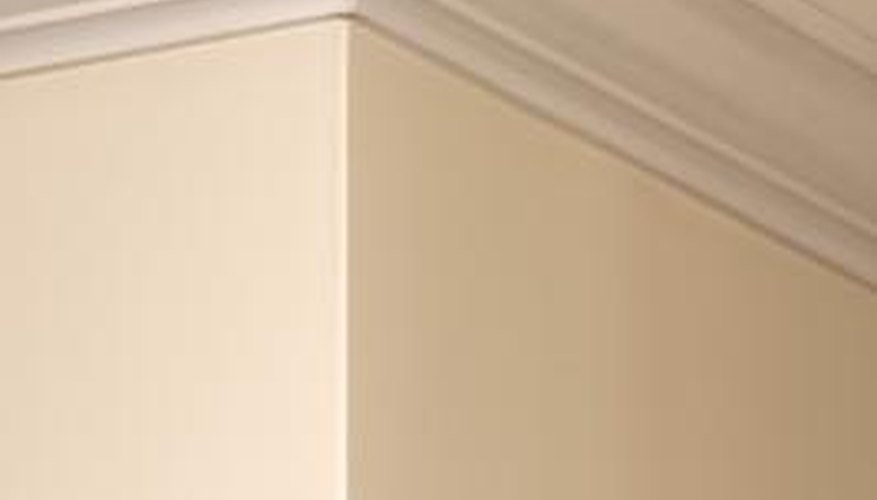During drywall panel installation, the contractor attaches corner bead to the rough edges where the drywall panels meet to form a straight corner. While many types of corner bead are made from laminated paper or plastic, others are made from thin metal that may rust if exposed to moisture before installation. They may also rust if there is a water leak within the wall. After rust develops, it will continue to bleed through the paint, marring the look of your wall. You must seal the stain before repainting.
- During drywall panel installation, the contractor attaches corner bead to the rough edges where the drywall panels meet to form a straight corner.
Remove as much of the visible rust stain as possible by dipping a sponge in white vinegar and wiping it over the corner. Allow the wall to dry completely before proceeding.
Sand the corner of your wall with a drywall sander to remove rough areas that may accompany the rust stain.
Apply a coat of stain-blocking primer to the corner with a brush. Apply it evenly so you don't leave visible brush strokes.
Let the primer dry and apply another coat.
Roll or brush on at least two coats of wall paint. If you're just touching up the corner, use matching wall paint and cover the entire primer coat.
TIP
Don't use metal corner bead that has rust stains, and store metal corner bead indoors before installation. Use only clean nails to attach metal or plastic corner bead to wall corners. Rusty nails may also result in rust stains on the corners. Read the label on the stain-blocking sealer to make sure that it seals rust. Although the stain may look like rust, it may be a water stain. Treat water stains in the same manner as rust stains.
WARNING
If your wall paint has faded, you may have to repaint the entire room to match the new paint on the corner. If the rust stain developed as a result of a water leak that reached the wall corner, another stain may develop if the leak is not repaired before the corner is repainted.
